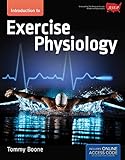Introduction to Exercise Physiology Tommy Boone
Material type: TextLanguage: Eng Publication details: Jones and Barlett Learning 2014 BurlingtonEdition: 1st edDescription: 532 p. 8.4 x 0.9 x 10.7 inchesISBN:
TextLanguage: Eng Publication details: Jones and Barlett Learning 2014 BurlingtonEdition: 1st edDescription: 532 p. 8.4 x 0.9 x 10.7 inchesISBN: - 9781449698188
- 612.044 BOO
| Item type | Current library | Call number | Materials specified | Status | Date due | Barcode | |
|---|---|---|---|---|---|---|---|
 Books
Books
|
Rashtriya Raksha University | 612.044 BOO (Browse shelf(Opens below)) | Available | 11001 |
Introduction to Exercise Physiology, identifies the key scientific content that is critically important to the successful practice of exercise physiology. This text focuses on the profession of exercise physiology by introducing students to the scientific basis for the practice of exercise physiology to prevent or control mind-body diseases, promote health and well-being, and enhance athlete performance. The goal of this text is to embrace a new paradigm of exercise physiology as a comprehensive healthcare profession and not as a one-course experience. Introduction to Exercise Physiology is endorsed by The American Society of Exercise Physiologists (ASEP) a national non-profit professional organization committed to the advancement of exercise physiologists. The text emphasizes sound scientific content that will help exercise physiologists design appropriate exercise prescription that focuses on the public health challenges of a sedentary lifestyle. Students will learn the necessary physiologic, electrocardiographic, biomechanic, and anatomic concepts pertinent to prepare for and pass the ASEP Board Certification exam. In addition, the text enables students to understand the ethics of sports nutrition and athletic performance, by examining exercise metabolism, fuel utilization, and cardiovascular functions and adaptations from a non-performance enhancing supplement perspective. Specific physiologic calculations are presented to teach students how to monitor exercise intensity, as well as to improve the safety and credibility of client-specific test protocols, health and fitness training programs, and athletic competitions. To support the “exercise as medicine” approach of the text it is organized into seven major areas: Part I Scientific Aspects of Exercise Physiology Part II Training the Cardiorespiratory and Muscular Systems Part III Training and Performance Part IV Exercise Is Medicine Part V Exercise Biomechanics Part VI Anatomy of Sports and Exercise Part VII The Profession of Exercise Physiology
There are no comments on this title.

